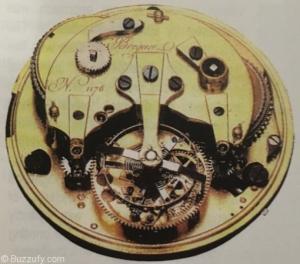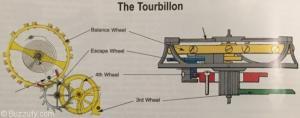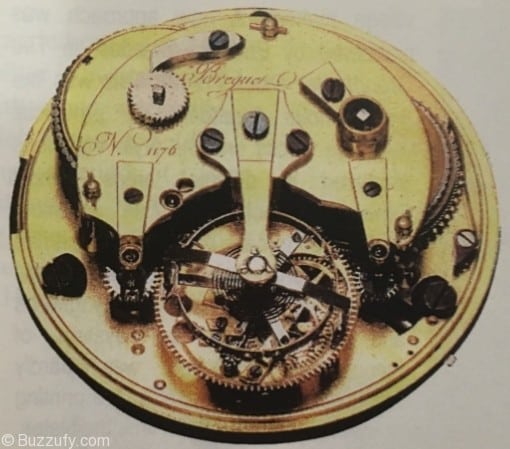Revolutionary Watches
Two hundred years have passed since Breguet invented his ‘whirlwind’, the Tourbillon.
Now there is even a Swatch with a rotating movement
Anything that rotates, particularly if it rotates quickly, works best if it is balanced. Watchmakers have always taken great care to ‘poise’ the balance wheel; to make sure it is balanced. It is relatively easy to poise the wheel, but the balance spring is a problem. The inside end of the spring is attached to the balance staff and the outer end is attached to the watch plate. As the balance swings, the spiral coil of the balance spring opens and closes and its centre of mass moves. If is impossible for such a system to remain in poise, particularly if the temperature changes, altering the properties of the spring. There will always be a positional error that will affect time keeping.
Breguet invented a method of overcoming the inevitable error due to lack of the poise. He found a way of making the balance (and the escapement) rotate slowly as it swung back and forth; any poise errors would be cancelled out. This was the tourbillon, for which he was granted a patent on June 26th (actually Messidor 7th according to the Revolutionary calendar), 1801 – just over 200 years ago.

The escapement assembly in a watch consists of the balance (with its spring), the lever, and the escape wheel. These have a very strict relationship with each other which must be maintained. All the rest of the watch has to do is to keep driving the escape wheel. The escape wheel is driven by the 4th wheel. Watchmakers, being very imaginative, call it the 4th wheel because, counting from the mainspring barrel, it is the 4th wheel.
What does take imagination, something Breguet had in abundance, is to realise that if he put the escapement assembly in a frame or carriage and moved it to be centred over the 4th wheel, he could make the carriage, and therefore the balance, rotate. Normally the 4th wheel pinion is fixed to the 4th wheel. If, although remaining concentric with it, the 4th wheel pinion is attached to the carriage axis and the 4th wheel is fixed to the watch plate and prevented from turning, the carriage would be driven around by the 3rd wheel.

Now although we’ve centred the escapement assembly over the 4th wheel the pinion of the escape wheel still meshes with it. The 4th wheel (now free of its pinion) is fixed to the watch plate and as the tourbillon carriage turns, the escape wheel pinion is drawn around the periphery of the 4th wheel driving the escapement. The watch works just as before but the escapement assembly is rotating. All the gear ratios can remain the same but the escapement has to be made more compact, usually by modifying the lever.






